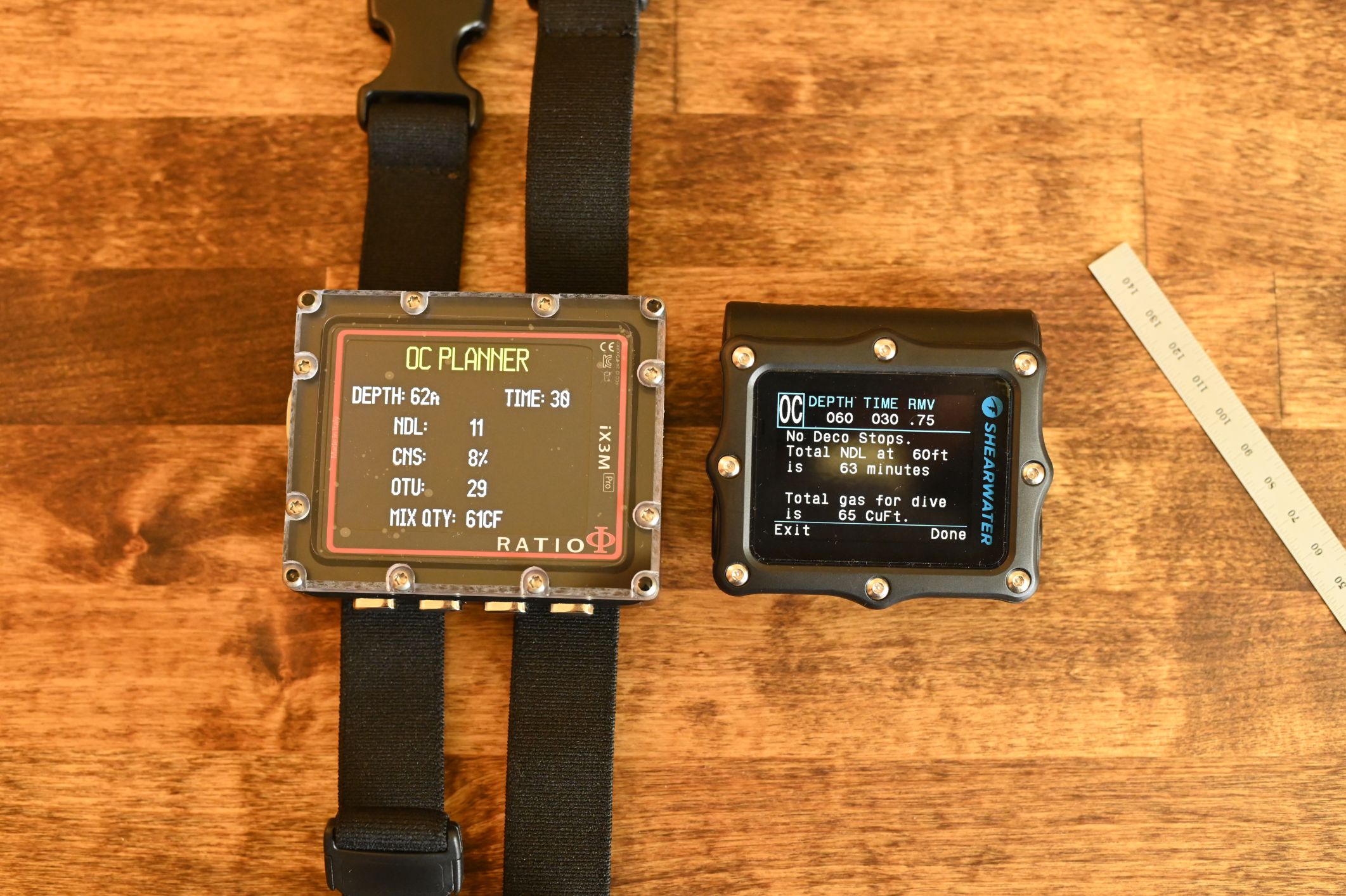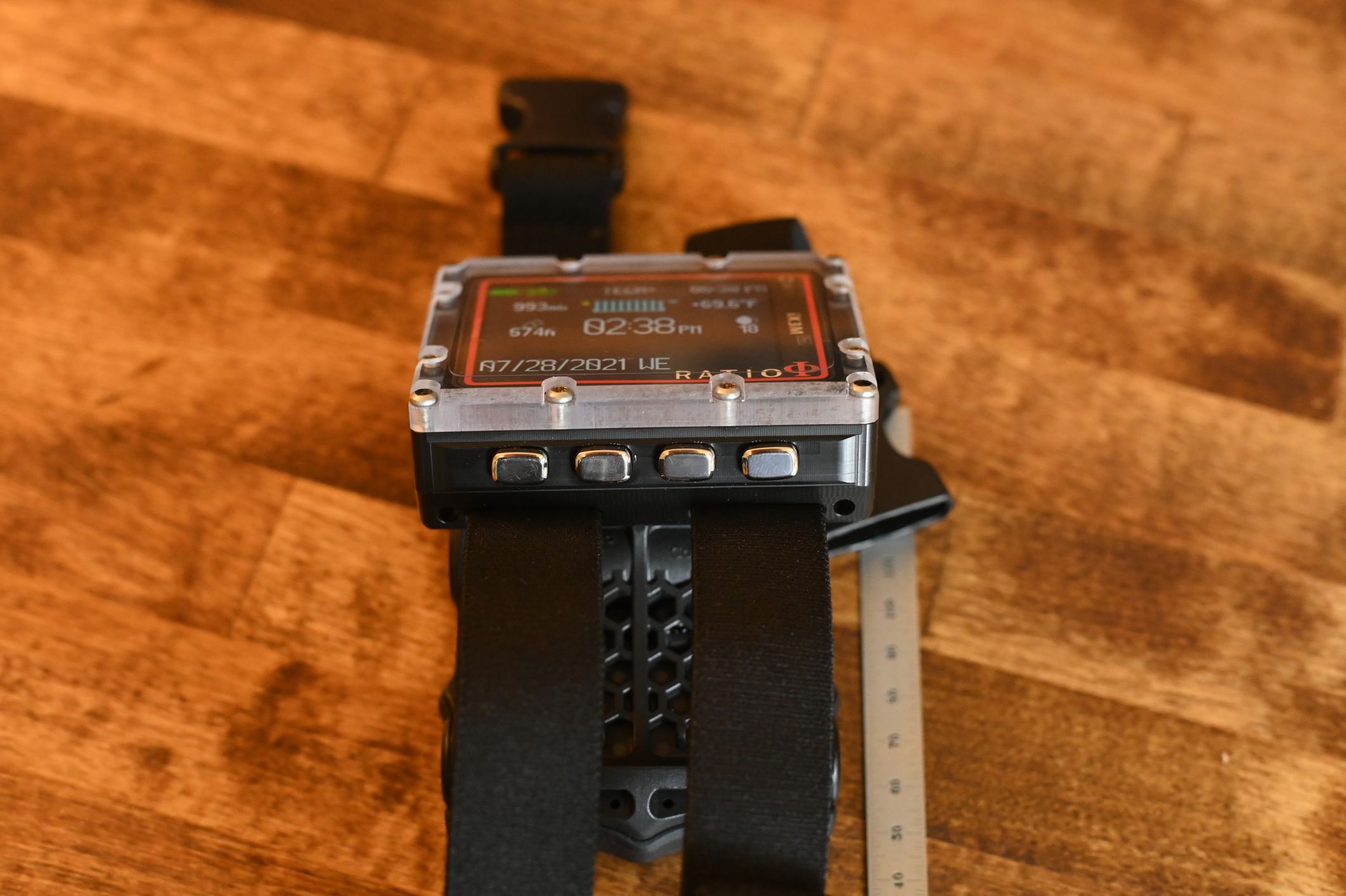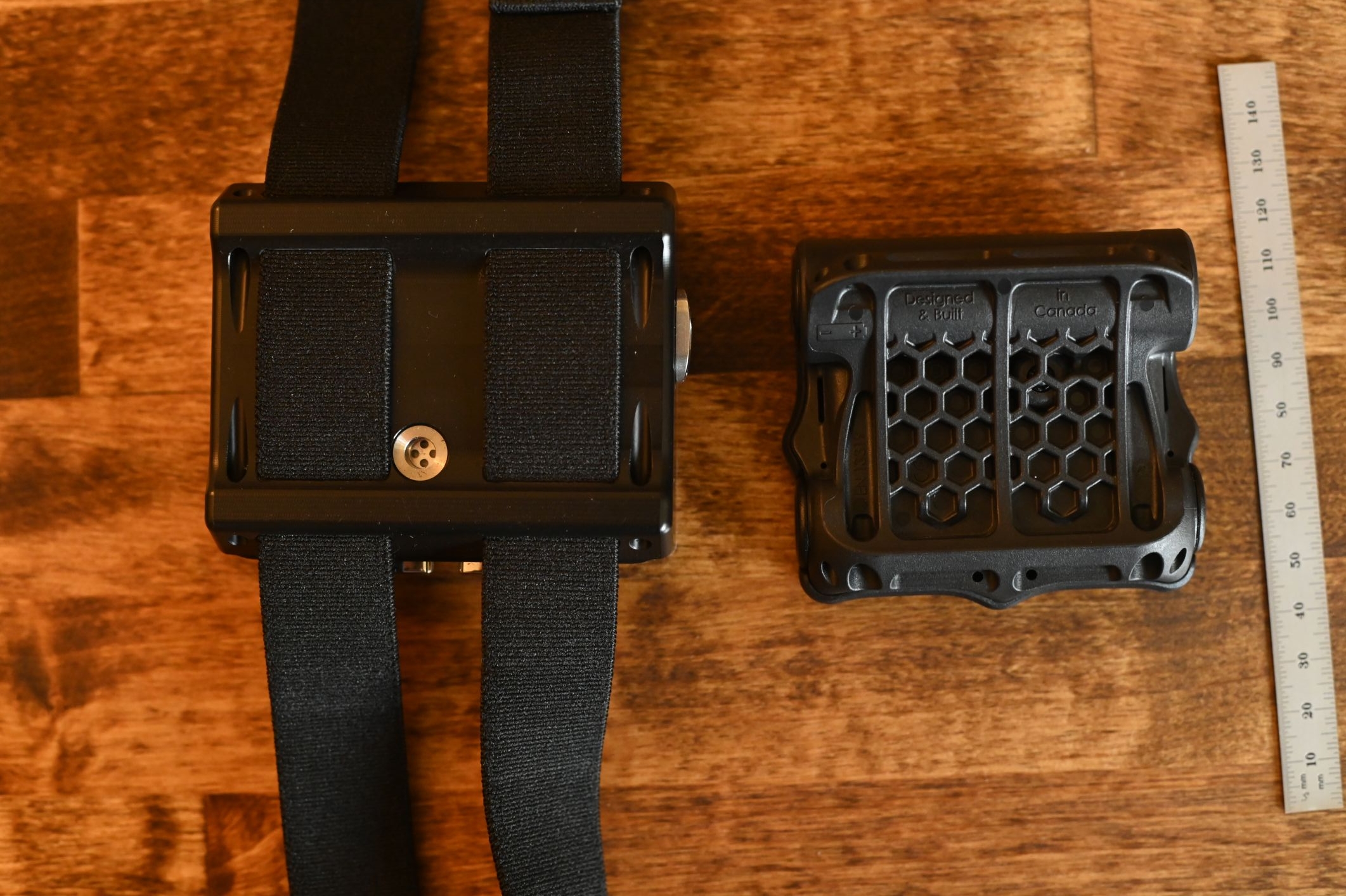Jwoobs
Registered
Conclusion
I'm going to try to return it, if Ratio customer service ever gets back to me.
I haven't really given much thought to the structure of this review, so please consider it more of a stream-of-consciousness from playing with the DC topside for a few days.
Price: $999 from Ratio
Note that it ships from their US distributor, Salt Blue, who lists it for $1099. Gotta love it when the manufacturer undercuts their distributor.
Pros:
Meh
Why a table top review you might ask? Their return policy specifically states unused and within 7 days of delivery, and I didn't really want to make a $1000 purchase without the chance to return it. I screwed up and didn't charge it to my Amex, which features return protection. Now I have to bug Ratio C/S to try to return it.
For what it's worth, I also intend to return the Perdix AI I bought on Amazon with the intent of comparing the two and picking the best. I will probably go with a Perdix when I'm ready for a tech computer, but getting one and playing with it really made me realize my current DC does the job perfectly fine. If I'm going to buy dive gear right now, I'll spend it on something else, like a drysuit.
Background
I've been diving for about 1.5 years, and have ~50 dives under my belt; probably 20 or so Great Lakes dives, a dozen ocean dives, and the balance in quarries. I'm looking to get into tech diving, either TDI AN/DP or PADI Tec 40+45. Although I have not taken the classroom portion for either certification, it is my understanding that tech dives are planned in advance, and you could really complete the dive with just a bottom timer. However, a DC would allow you to adjust the deco profile on the fly, for example if you lost a cylinder, turned the dive early, etc. I currently have a Seac Action, which is a perfectly serviceable watch style computer running ZHL-16C and supporting 2 mixes. It seems like it's intended to support light deco that European agencies teach. However, it also works just fine for NDL diving, and with a strap extender I got on Amazon will fit over a 7mm wetsuit.
Requirements
A short list of things I want out of a tech computer:
Custom gradient factors, trimix capable, Buhlmann algorithm, 3+ buttons, big display
AI is a plus, but if I'm bringing along an SPG as a back-up anyway it just feels like lighting $300 on fire. It would be neat to see my RMV at each portion of a dive, however.
Why not just get a Perdix AI?
I read through the manual for the Perdix, and the two-button layout just didn't sit right with me. I've become spoiled by my Seac with being able to hit the (-) button to reduce a value, rather than increase it 9 times to get it to roll over. As I understand it, the Teric has this functionality, but I don't have any need for a smartwatch. So the ratio seemed like the closest competitor to the Perdix, but with more buttons.
ZHL-16B vs -16C
For some reason wikipedia, Eric Baker's m-value paper, and Deco for Divers all purport that -B should be used for making dive tables, while -C is for computers. However, the only difference between the models is the surfacing M-value, with -B being about 2% higher on some of the middle compartments. With computers supporting gradient factors, I think this becomes trivial. in fact, if you were to reduce the GF's on -B by approximately 2% to equalize the middle compartments, -B would more conservative than -C.
The dive planner
The diver planner just got worse the more I played with it. For starters, there isn't an NDL planner, at least not in the sense that you are imagining one. You can enter the depth (to the nearest meter, even if the DC is set to feet/psi), then enter a dive time (min 1 min, max 60 mins) and it will spit out either a deco plan or a indicate the remaining NDL time.
First I attempted to put 1 min @ 62ft on the ratio, which spit out an NDL of 28 mins.
Then I tried 30 min @ 62ft, which spit back 11 mins of NDL.
(1 + 28) != (30 + 11).
Maybe the dive planner is only intended for deco dives, but either way it doesn't inspire confidence that it will calculate the NDL correctly when I'm just trying to do some rec diving.
I discovered the max dive time limitation when I was attempting to compare it to the perdix; both were set to 35/75 GF.
At 60ft on 32%, the perdix was indicating an NDL of 63 minutes, while the ratio was suggesting 41 mins. So I thought I would plan a dive on both of them for 63 minutes, and compare the deco schedules, but I couldn't increase the ratio past 60 mins. So I ran it at 60 min: rather than spit out a deco schedule, the ratio just gave back an NDL of zero. So I reduced it to 50 minutes, thinking it should spit out 10 minutes of NDL remaining. Nope, 4 minutes.
I played around with some theoretical deco dives too, and while the ratio was pretty close in terms of stop times and depth with both the perdix and an android app I have, it was usually the longest run time, despite having an allegedly more aggressive algorithm.
4 Button Navigation
While it is certainly better than the Perdix, the 4 button navigation is wonky in some ways. For starters, the left button is always a home button, which is nice, but I wish it were a back button instead. Next, when navigating a menu, the 2nd button is select, and 3 and 4 scroll up and down, respectively. But once you get into a menu item (e.g. dive settings, mix table) the 2nd button scrolls through the items on the screen, while the 3th and 4th buttons increase or decrease the value. It makes sense in that it is quicker than scrolling, selecting, then changing the value and unselecting a field, but it still changes the way the buttons behave between screens.
The Mix Table
Entering mixes is pretty easy, but there is no summary table of all the mixes you have stored. Big win for the Perdix in this regard. Also, there is no quick way to scroll through the mix table. Each page has O2%, He%, Mod, DECO and NEXT => on it. To get to mix 2, you have to scroll down to NEXT=>, then hit the (+) or (-) button. But, on the next page, the selection automatically moves to the top again. So each time you want to advance to the next mix it's 5 button presses. Oh, and the ratio can hold 10 mixes, plus 10 dilutents which are mercifully stored in a different table.
A computer to grow with
Would I feel comfortable letting a friend borrow this computer for a weekend to get their OWD? Absolutely not. Unlike the perdix, this doesn't have a simple nitrox or air mode. It's a full-time tech computer. Even the gradient factors don't have a low/med/high option. Just straight numbers, so you better know what they mean and how to pick safe ones. At least it won't let you go over 100%
I'm going to try to return it, if Ratio customer service ever gets back to me.
I haven't really given much thought to the structure of this review, so please consider it more of a stream-of-consciousness from playing with the DC topside for a few days.
Price: $999 from Ratio
Note that it ships from their US distributor, Salt Blue, who lists it for $1099. Gotta love it when the manufacturer undercuts their distributor.
Pros:
- Big, legible display
- 4 button navigation (3 + home btn)
- Integrated battery (waste reduction)
- Very flat menu lay-out; you don't have to select down through multiple layers
- The dive planner sucks
- No blue-tooth, unless you get the $200 more expensive GPS version
- It takes 5 button presses to go to the next mix in the mix table
- Integrated battery (if you forget to charge it)
Meh
- Support for 10 transmitters
- ZHL-16B - allegedly this is less conservative than the C version used in most other DC.
- Dual algorithm (VPM, Buhlman) and you might even be able to switch mid dive
- Magneometer, Tilt meter, moon phase, stopwatch, mix analyzer, gas blender "apps"
- Build quality. The base is milled out of a solid block of plastic, and looks fine. However, the edges of the polycarbonate top weren't touched up after machining, and look kinda rough.
Why a table top review you might ask? Their return policy specifically states unused and within 7 days of delivery, and I didn't really want to make a $1000 purchase without the chance to return it. I screwed up and didn't charge it to my Amex, which features return protection. Now I have to bug Ratio C/S to try to return it.
For what it's worth, I also intend to return the Perdix AI I bought on Amazon with the intent of comparing the two and picking the best. I will probably go with a Perdix when I'm ready for a tech computer, but getting one and playing with it really made me realize my current DC does the job perfectly fine. If I'm going to buy dive gear right now, I'll spend it on something else, like a drysuit.
Background
I've been diving for about 1.5 years, and have ~50 dives under my belt; probably 20 or so Great Lakes dives, a dozen ocean dives, and the balance in quarries. I'm looking to get into tech diving, either TDI AN/DP or PADI Tec 40+45. Although I have not taken the classroom portion for either certification, it is my understanding that tech dives are planned in advance, and you could really complete the dive with just a bottom timer. However, a DC would allow you to adjust the deco profile on the fly, for example if you lost a cylinder, turned the dive early, etc. I currently have a Seac Action, which is a perfectly serviceable watch style computer running ZHL-16C and supporting 2 mixes. It seems like it's intended to support light deco that European agencies teach. However, it also works just fine for NDL diving, and with a strap extender I got on Amazon will fit over a 7mm wetsuit.
Requirements
A short list of things I want out of a tech computer:
Custom gradient factors, trimix capable, Buhlmann algorithm, 3+ buttons, big display
AI is a plus, but if I'm bringing along an SPG as a back-up anyway it just feels like lighting $300 on fire. It would be neat to see my RMV at each portion of a dive, however.
Why not just get a Perdix AI?
I read through the manual for the Perdix, and the two-button layout just didn't sit right with me. I've become spoiled by my Seac with being able to hit the (-) button to reduce a value, rather than increase it 9 times to get it to roll over. As I understand it, the Teric has this functionality, but I don't have any need for a smartwatch. So the ratio seemed like the closest competitor to the Perdix, but with more buttons.
ZHL-16B vs -16C
For some reason wikipedia, Eric Baker's m-value paper, and Deco for Divers all purport that -B should be used for making dive tables, while -C is for computers. However, the only difference between the models is the surfacing M-value, with -B being about 2% higher on some of the middle compartments. With computers supporting gradient factors, I think this becomes trivial. in fact, if you were to reduce the GF's on -B by approximately 2% to equalize the middle compartments, -B would more conservative than -C.
The dive planner
The diver planner just got worse the more I played with it. For starters, there isn't an NDL planner, at least not in the sense that you are imagining one. You can enter the depth (to the nearest meter, even if the DC is set to feet/psi), then enter a dive time (min 1 min, max 60 mins) and it will spit out either a deco plan or a indicate the remaining NDL time.
First I attempted to put 1 min @ 62ft on the ratio, which spit out an NDL of 28 mins.
Then I tried 30 min @ 62ft, which spit back 11 mins of NDL.
(1 + 28) != (30 + 11).
Maybe the dive planner is only intended for deco dives, but either way it doesn't inspire confidence that it will calculate the NDL correctly when I'm just trying to do some rec diving.
I discovered the max dive time limitation when I was attempting to compare it to the perdix; both were set to 35/75 GF.
At 60ft on 32%, the perdix was indicating an NDL of 63 minutes, while the ratio was suggesting 41 mins. So I thought I would plan a dive on both of them for 63 minutes, and compare the deco schedules, but I couldn't increase the ratio past 60 mins. So I ran it at 60 min: rather than spit out a deco schedule, the ratio just gave back an NDL of zero. So I reduced it to 50 minutes, thinking it should spit out 10 minutes of NDL remaining. Nope, 4 minutes.
I played around with some theoretical deco dives too, and while the ratio was pretty close in terms of stop times and depth with both the perdix and an android app I have, it was usually the longest run time, despite having an allegedly more aggressive algorithm.
4 Button Navigation
While it is certainly better than the Perdix, the 4 button navigation is wonky in some ways. For starters, the left button is always a home button, which is nice, but I wish it were a back button instead. Next, when navigating a menu, the 2nd button is select, and 3 and 4 scroll up and down, respectively. But once you get into a menu item (e.g. dive settings, mix table) the 2nd button scrolls through the items on the screen, while the 3th and 4th buttons increase or decrease the value. It makes sense in that it is quicker than scrolling, selecting, then changing the value and unselecting a field, but it still changes the way the buttons behave between screens.
The Mix Table
Entering mixes is pretty easy, but there is no summary table of all the mixes you have stored. Big win for the Perdix in this regard. Also, there is no quick way to scroll through the mix table. Each page has O2%, He%, Mod, DECO and NEXT => on it. To get to mix 2, you have to scroll down to NEXT=>, then hit the (+) or (-) button. But, on the next page, the selection automatically moves to the top again. So each time you want to advance to the next mix it's 5 button presses. Oh, and the ratio can hold 10 mixes, plus 10 dilutents which are mercifully stored in a different table.
A computer to grow with
Would I feel comfortable letting a friend borrow this computer for a weekend to get their OWD? Absolutely not. Unlike the perdix, this doesn't have a simple nitrox or air mode. It's a full-time tech computer. Even the gradient factors don't have a low/med/high option. Just straight numbers, so you better know what they mean and how to pick safe ones. At least it won't let you go over 100%
iX3m Bottom
The square buttons are allegedly only on the 2021+ versions.
The spacing is such that I can use...
The spacing is such that I can use...
Ratio vs Perdix Thickness
The Perdix is actually "thicker" when measured from the display to the strap lug, but because it...
iX3M NDL Dive Planner Fail
Compare the total runtime for this dive with that of the next image












